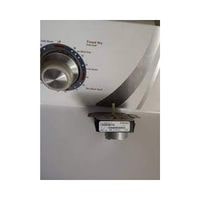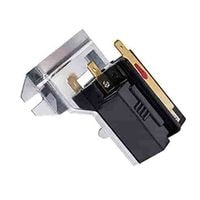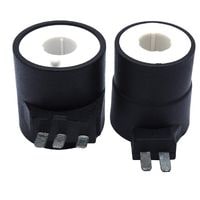Admiral Dryer Not Heating. When the control board or high-limit thermostat of the Admiral dryers has failed, it is likely that the dryer will not heat.
It is likely that any gas dryer will have a similar problem if the solenoid that controls the gas valve, or the ignition, has stopped working correctly.
If the heating element burns out completely, the electric dryer will stop producing heat or if the thermal fuse has blown, the dryer will cease producing heat altogether.
Admiral Dryer Not Heating

Typical solutions for: Admiral Dryer not heating. This is a result of a Thermal fuse malfunction which helps to protect the dryer from overheating.
Check that the vent leading outside is clear and ensure there isn’t any sort of blockage in the line. The Thermal fuse will be replaced in this case.
Problem With Heating Element
The heating element that is there warm the clothes up before they enter the dryer drum, but sometimes it turns out and as a result, one or more of the following can happen: clothes get wet, or you end up not drying them at all.
To figure out what has happened, you can use a multimeter to test for continuity (resistance) so that you don’t have to take apart the entire machine.
Issue With Flame Sensor
On  gas dryers, the flame sensor detects the heat emitted by the flame. If the flame sensor isn’t working, the dryer won’t heat.
gas dryers, the flame sensor detects the heat emitted by the flame. If the flame sensor isn’t working, the dryer won’t heat.
First, troubleshoot to see if other parts of your system are at fault, like checking to see whether or not your igniter and thermal fuse are actually bad and need replacing before you check out whether or not your flame sensor has gone haywire.
To do this, first, use a multimeter to test how much current your flame sensor is receiving at room temperature so that way you’ll know if it’s actually defective.
Error In Igniter
The igniter is the button on your clothes dryer that sets off a spark to ignite the burner. If your igniter has burned out, your burner will fail to fire.
To test this, use a multimeter, which is an electronic device used to measure electricity and continuity, in order to measure the resistance of the igniter.
If it outputs zero Ohms of resistance, you should replace it because if it still returns any Ohms – then it might be potentially broken and cause more issues in the future.
Solenoids For Gas Valves

Gas dryers have two or more gas valve solenoids.
The gas valve solenoids are responsible for opening the ports of the burner assembly to allow natural gas to come through and provide heat.
If the valve coils (solenoids) fail, the dryer won’t work.
First, you should check the igniter, which will cause a spark so. That if it does not glow, it means that one or more of your valve solenoids is defective and needs replacing.
We recommend replacing all related parts at once since they tend to do better as a set.
Defective Thermal Fuse
The thermal fuse is a safety device designed to protect the dryer from overheating.
It’s found on the housing of the blower motor or at the part of the unit which generates heat, like an electric dryer that has a heating element or a gas model with a cotton burner.
When this part gets too hot or warm, it will shut down automatically and cease to function until it cools down again.
You can easily test whether or not it currently has open circuit continuity once you turn off your machine by using a multimeter.
Thermostat Cycle Error
A cycling thermostat cycles the heat on and off to regulate the temperature of a dryer. If the cycling thermostat fails, the dryer will not heat.
It’s important to remember that this is rarely the case. Prior to replacing your thermostat, you must check all other components to determine whether or not they are faulty.
Only after determining that all other components are working properly should you test the thermostat with a multimeter to test for continuity.
Faulty Timer
If the dryer isn’t heating up, there’s a possibility that the timer is defective. However, this is often not the case and before replacing it, check if any of the other components are faulty.
A faulty timer will keep jiggling when you press it or have difficulty turning with your fingers.
If you determine that all of the other parts working perfectly, test the timer by using a multimeter and consulting the wiring diagram in order to identify whether or not it’s actually malfunctioning. Then you can either fix or replace this part.
Related Guide
